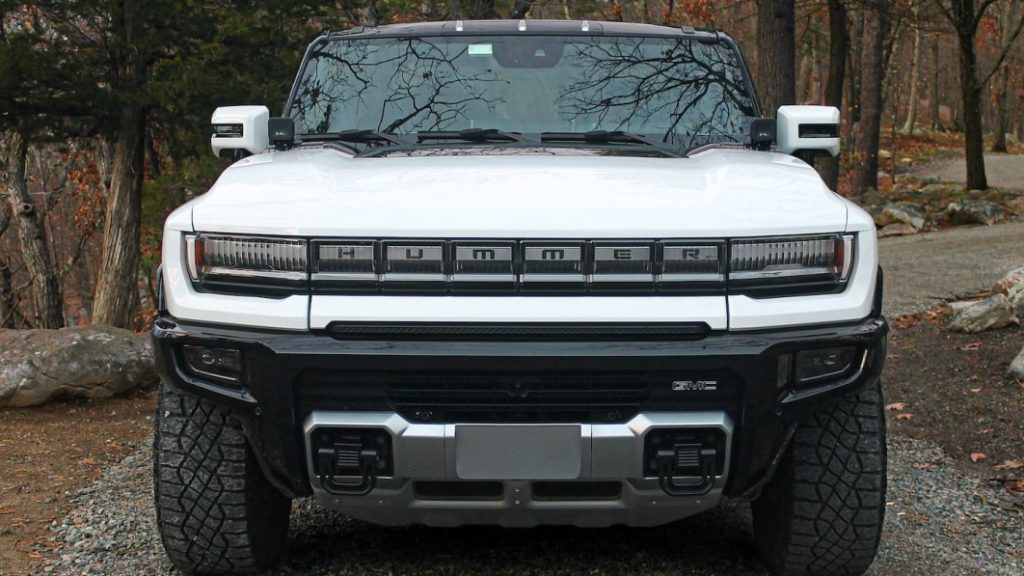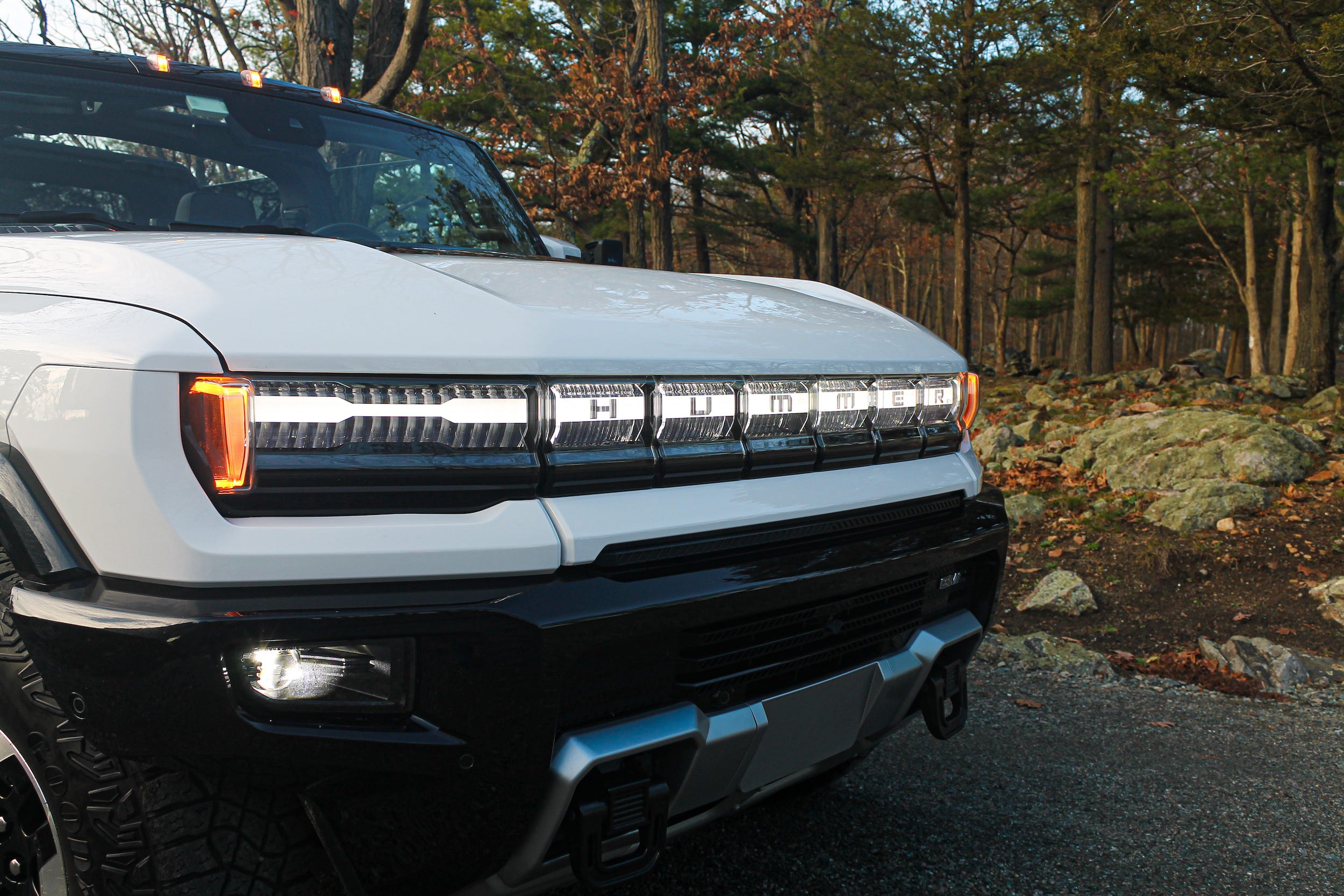What the electric Hummer's size and weight means for its efficiency

The 2022 GMC
Hummer EV Edition 1.
Tim Levin/Insider
If you think driving a pint-sized Nissan Leaf is as good for the planet as driving a huge electric Hummer, think again.
The GMC Hummer EV uses significantly more electricity than other EVs, meaning it produces more pollution upstream.
The electric Hummer weighs 9,000 pounds and its battery weighs as much as a Honda Civic.
The new electric Hummer rolls through town without a deafening engine rumble or a cloud of toxic fumes, but it doesn’t exactly tread lightly.
The colossal truck weighs an astonishing 9,000 pounds. (Think two Toyota Tacomas, three Honda Civics, or 24 Shaquille O’Neals.) Moreover, the GMC Hummer EV is in many ways a supersized gas guzzler for a new era. It repackages many of the same flaws of hulking SUVs and trucks of years past — and proves not all zero-emission cars are created equal.
EVs can be energy guzzlers too
On the whole, electric cars use less energy than gas-powered ones. But they aren’t all equally efficient.
No surprise here: The Hummer needs more electricity than any other EV on the market to move its elephantine frame. The Environmental Protection Agency rates the pickup at 47 MPGe (miles per gallon of gasoline-equivalent). For comparison, the Tesla Model 3 sedan is nearly three times as efficient, earning a rating of 132 MPGe. The Ford F-150 Lightning, another electric truck, gets 70 MPGe.
This has real consequences: Since the US gets 61% of its energy from oil, coal, and natural gas, the more electricity a car needs, the more pollution it creates upstream.
As the Union of Concerned Scientists put it: “Both EV cars and trucks are much cleaner than their gasoline counterparts, but electric trucks are responsible for more global warming emissions than electric cars simply because trucks are larger and heavier.”
The 2022 GMC Hummer EV Edition 1.
Tim Levin/Insider
The Hummer EV is also resource-intensive to manufacture, requiring a ginormous (and weighty) battery to give people the 300-plus miles of range they desire. You could produce three Chevrolet Bolts with the same battery cells consumed by one Hummer. And raw battery materials like lithium are already in short supply.
“How many more electric cars could we build that are a reasonable size if we just reallocated all the stuff going into that 3,000-pound Hummer EV battery toward sedans or more reasonably sized cars, let alone e-cargo bikes?,” David Zipper, a visiting fellow at the Harvard Kennedy School’s Taubman Center for State and Local Government, told Insider.
The 4.5-ton elephant in the room
The Hummer EV is a full 4,000 pounds heavier than a well-optioned, gas-powered Ford F-150. And it’s even chunkier than the original military-inspired Hummer H1 that put the brand on the map. It’s so massive that it isn’t allowed on the Brooklyn Bridge and that General Motors isn’t required to display its EPA efficiency stats on a window sticker.
Extra weight and size in a vehicle don’t just breed inefficiency. Research shows it can also lead to increased emissions from tire and brake wear and greater risk to others in a crash (both from bigger blind spots and just plain physics).
Responding to questions about all of this, a GM spokesperson noted that the Hummer EV is meant to be a so-called “halo vehicle” that demonstrates the potential of EVs. She also mentioned that GM engineers took mass into account when designing the truck’s brakes and other systems and talked up its safety features. Some research attributes recent spikes in pedestrian road deaths to factors other than just bigger vehicles, like drunk driving, speeding, and infrastructure shortcomings, she added.

The 2022 GMC Hummer EV Edition 1.
Tim Levin/Insider
The new Hummer isn’t unique here. All battery-powered cars are heavier than their gas counterparts — but it is the biggest.
To be sure, switching Americans over to electric cars will require presenting them with lots of options across the automotive spectrum. Someone who drives a lifted diesel truck isn’t all of a sudden going to embrace a cute little hatchback. And research has shown that electrifying pickup trucks puts a bigger dent in greenhouse-gas emissions than doing the same for smaller cars.
Still, some transportation experts think more should be done to steer buyers away from huge, energy-guzzling EVs. Zipper is a fan of weight-based fees that are already in place in Washington, DC, and Norway, a country on the leading edge of the EV movement.
“People should be free to purchase what they want, but we should make sure that the market forces them to pay for the cost that their decision might impose on society,” Zipper said.
Related video:







